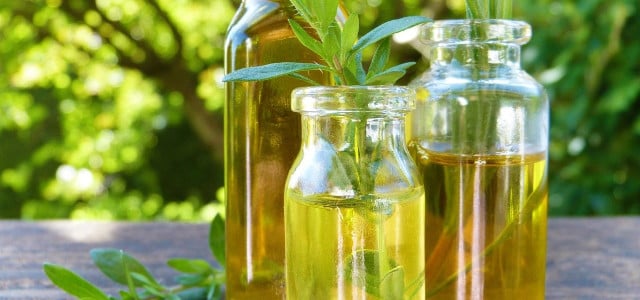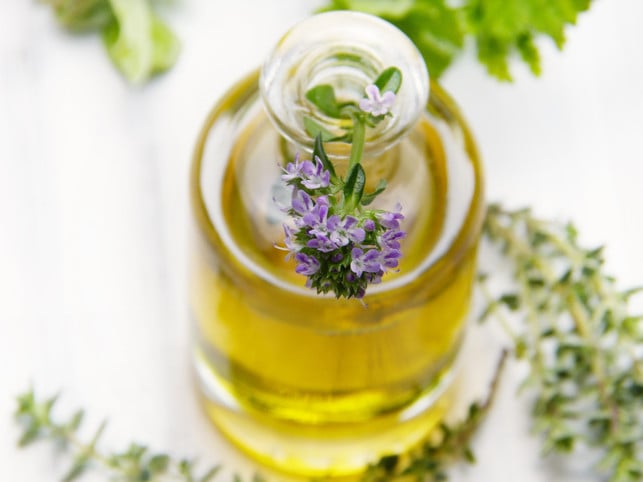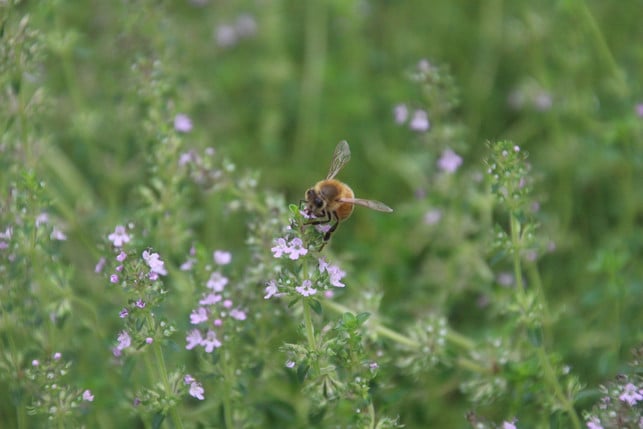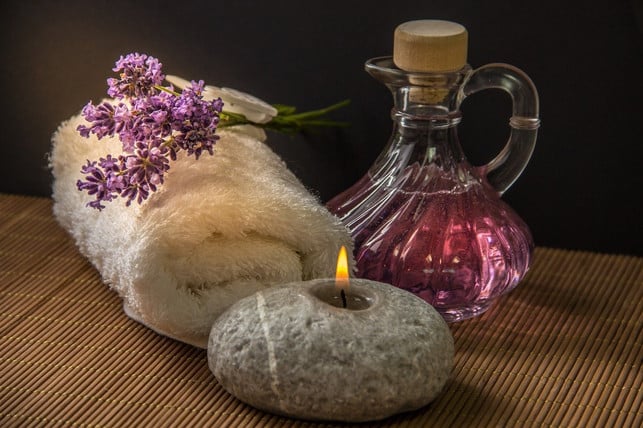
A macerate is a fragrant oil that you can easily make yourself from wild plants and herbs. You can use it in a variety of ways as massage oil or in the kitchen.
![]()
The Mazerate is a method of getting aromatic plant substances. In principle, a macerate works like a herbal tea. But instead of brewing the plant parts with hot water, oil is used in most cases, which does not have to be heated.
In the form of macerates, you can use the aromas and medicinal herbs of nature. The aromatic oil extracts are suitable for personal hygiene or refining food.
What is a macerate?

The term mzerate describes a procedure to remove ingredients, mainly from plants. Since a particularly large number of valuable ingredients of plants are fat -soluble, oil usually serves as a solvent. This procedure is therefore often referred to as an oil extract.
In the course of the Mazerat, part of the vegetable essential oils merges into the oil used for inserting. Essential oils serve plants to attract insects for pollination, keep pests away and protect themselves against diseases. In high doses they are often poisonous for humans. In small quantities, on the other hand, they have long been used as a remedy in naturopathy, for example for colds and flu infections.
A macerate is not a pure, highly concentrated essential oil. The essential oils of the plants are solved in a small concentration in a carrier oil. That is why oil extracts are particularly easy to use in naturopathy: there is hardly any risk of overdosing the essential oils. For example, you can use certain macerates as massage oils, with others you can season food.
Which plants are suitable for a macerate?

You can produce a macerate from almost all herbs and plants. As massage oil, fragrant plants, such as:
- Roses
- St. John’s wort
- eucalyptus
- Jaw
- lavender
If you want to make an oil that you can use in the kitchen, herbs and spices such as:
- Cinnamon sticks
- rosemary
- thyme
- Lemon peel
- tarragon
Create mzerate: what you should consider

Making a macerate yourself is very simple. You can extract the essential oils either hot or cold.
- A warm extract can be done quickly – it takes just two to three hours. However, there is also a risk that part of the essential oils evaporated.
- With a cold extract, you should let the oil steep at room temperature for at least two weeks.
- The plant material should be dry before you put it in oil, otherwise mold can form.
- Oil extracts can theoretically indefinite. However, the oil used for inserting oxidizes over time. After a few months, you should no longer use the mzerate for dishes.
Plant oils are best suited for the production of macerates because they are liquid at room temperature. Note the following in your choice:
-
Refined vegetable oils are basically more flavor -neutral than native oils. They don’t oxidize so quickly either. At best, use a refined sunflower oil, thistle oil, or rapeseed oil.
- If you use a native oil, you should use the macerate quickly, as these oils can quickly become rancid.
-
Flavor -intensive oils such as olive oil are also suitable for oil extracts. However, your own taste can cover the aromas of the inserted plants.
The basic recipe for Mazerate

The basic recipe for mzerate is very simple:
- Fill a sterilized glass to a quarter with flowers, herbs or other plant components of your choice. Tip: Use a large jam jar with screw cap.
- Put cold vegetable oil onto the plant parts until the glass is full.
- Let the oil extract pull in a warm place for at least two weeks.
- Seihe the finished oil through a sieve or cloth. It is best to store it in a brown las bottle or pharmacist bottle. You will receive such bottles in bioma markets or online, for example in the avocadostore. Then store the bottle in a dark place so that the oil is protected from the sun’s rays and thus oxidized more slowly.
Alternatively, you can pour the plant components at about 60 degrees of hot vegetable oil and let it steep for two to three hours. Then you can sieve the oil – the Mazerate is ready.
In our articles on St. John’s wort oil and chamomile oil you will find detailed instructions on how to make a macerate using a cold extract. If you prefer a warm extract, you will get more information in our article on ginger oil.
What is a Mazerate suitable for?

Mazerates in the kitchen
As already mentioned, you can use a macerate to season dishes.
- For example, you can refine fried potatoes with rosemary oil or thyme oil.
-
Cinnamon oil, on the other hand, tastes particularly tasty in cakes and desserts.
For example, you can replace baking aromas with such macerates. These are often concentrated essential oils. For example, if you replace part of the butter in a cookie recipe with homemade cinnamon oil, you no longer need a cinnamon back aroma.
A macerate as massage oil
In body care, oil extracts contribute to a relaxed atmosphere. The odor -intensive macerates in particular have a similar effect to aromatherapy. Several studies indicate that essential oils have a stress -reducing effect. Your pleasant fragrance should lighten the mood, which is why oil extracts are often processed into ointments. Many also swear by fragrant macerates for respiratory diseases such as runny nose or cold.
However, the exact mechanisms of action of these flavors have not yet been exhaustively examined.
Best maceration from domestic plants
There are many recipes for macerates on the Internet that use exotic ingredients such as tea tree leaves, spice cloves or lemongrass as the basis. But not only these plants are suitable for aromatic macerates.
As a regional variant, you can use domestic herbs and wild plants. For example, you can grow rosemary, sage, or chamomile in a balcony garden. So you save money and avoid long transport routes. Local plants are therefore the more ecologically sustainable choice for Macerates.
Revised by Martina Naumann
Read more on utopia.de:
- Phytotherapy: This is behind herbal medicine
- The yarrow: effect and application of the medicinal plant
- Chamber tea: Everything about the effect of the medicinal plant
** marked with ** or orange underlined Links to sources of supply are partially partner links: If you buy here, you will actively support Techzle\.com, because we will then receive a small part of the sales proceeds. More information.